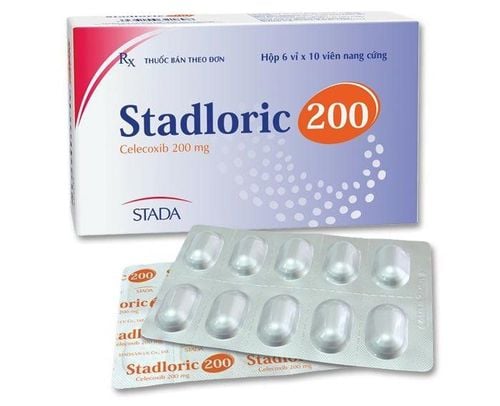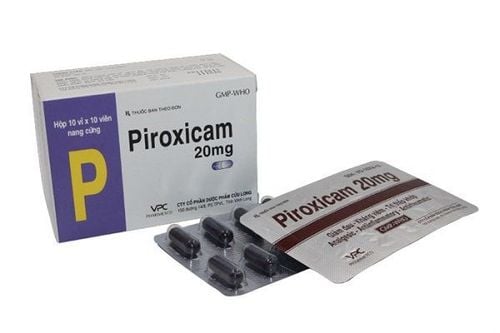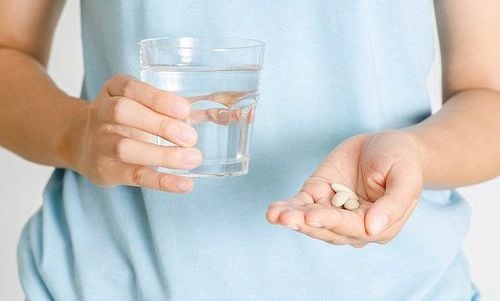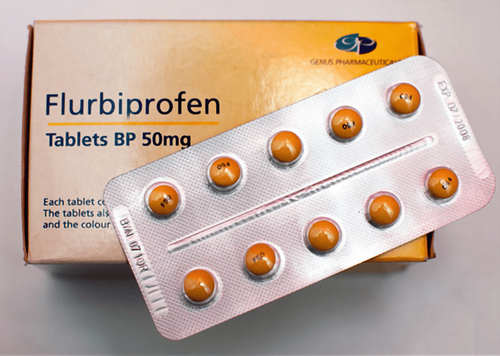This is an automatically translated article.
Contains the main ingredients Paracetamol and Ibuprofen with the respective strengths of 325mg and 200mg - Becoaloxan belongs to the group of non-steroidal antipyretic analgesics. The drug is indicated mainly to reduce fever and relieve pain in some cases.
1. Becoaloxan medicinal uses
Becoaloxan is a brand name of the active ingredients Paracetamol and Ibuprofen only used when prescribed by a doctor. The drug is used for the main purpose of treating some of the following cases:
Arthritis, arthritis. Muscle pain, back pain. Rheumatism . Sports injuries. Pain and inflammation relief in dentistry, obstetrics and orthopedics. Relieve headache, toothache, dysmenorrhea, pain caused by cancer. Antipyretic. Paracetamol (acetaminophen or N - acetyl - p - aminopherol) is an active metabolite of phenacetin, is an effective analgesic and antipyretic, which can be used as an alternative to aspirin. However, unlike aspirin, paracetamol is not effective in treating inflammation.
In equal doses, paracetamol has analgesic and antipyretic effects similar to aspirin.
Paracetamol with therapeutic doses has little impact on cardiovascular and respiratory systems, does not change acid and base balance, does not cause irritation, scratches or stomach bleeding like when taking salicylates, because paracetamol does not affect cyclo -oxygenase (COX), which, instead, only affects the central nervous system cyclo-oxygenase/prostaglandin.
Paracetamol has no effect on platelets or bleeding time.
After oral administration, paracetamol is rapidly and almost completely absorbed from the gastrointestinal tract. Peak concentrations are reached within 30 to 60 minutes. The drug is metabolised in the liver and eliminated mainly in the urine as metabolites.
Ibuprofen belongs to the propionic acid group of arylcarboxylic acid derivatives. The antipyretic effect is poor, so it is rarely used as a simple antipyretic. Anti-inflammatory effect, strong analgesic and anti-inflammatory effect, maximum discharge after 2 days of treatment.
The mechanism of anti-inflammatory action of Ibuprofen is to inhibit the synthesis of inflammatory chemical mediators, especially prostaglandins, by inhibiting COX, the enzyme that synthesizes prostaglandins.
In addition, Ibuprofen also antagonizes the proteolytic enzyme system, prevents the protein transformation process to stabilize the lysosomal membrane and antagonizes the effect of chemical mediators such as bradykinin, serotonin, histamine, chemotaxis inhibition. leukocytes, inhibiting the migration of leukocytes to inflamed tissues. The mechanism of analgesic action of Ibuprofen, like other non-steroidal anti-inflammatory drugs, has a mild and moderate analgesic effect by reducing the synthesis of prostaglandin F2, which reduces the nociceptive volume of the sensory nerves. sensitivity to the pain agents of the inflammatory response.
The antiplatelet effect is weaker than that of aspirin.
After oral administration, maximum serum concentrations are reached in 90 minutes. The half-life of the drug is 1-2 hours. The drug is eliminated mainly in the urine.
2. Instructions for using the drug Becoaloxan
Dosage as follows:
Adults: Take 1 tablet every 4 to 6 hours/day. The maximum dose is 8 tablets per day. Children: Drug overdose can lead to poisoning, even life-threatening if not treated promptly. It is necessary to discuss with a specialist to determine the appropriate drug and dose for each age group. For pregnant women and lactating women: The drug can be transported across the placenta and excreted in breast milk. Therefore, it is advisable to consult a specialist to determine whether the drug should be taken or not. Before prescribing Becoaloxan, tell your doctor if you have one of the following contraindications:
Hypersensitivity to Paracetamol, Ibuprofen or to any of the ingredients. Have advanced liver disease. Having viral hepatitis. Alcoholism . Severe kidney failure. Gastroduodenal ulcer or bleeding. There are nasal polyps. Allergy to aspirin or other NSAIDs. Deficiency of the enzyme glucose - 6 - phosphate dehydrogenase. When used in high doses, paracetamol will produce a lot of N - acetyl benzoquinonomin which depletes glutathione in the liver, then N - acetyl benzoquinonomin will react with the sulfydride group of liver proteins causing liver damage, liver necrosis, and possibly death. if not treated promptly.
Therefore, note that do not self-medicate for more than 10 days in adults or more than 5 days in children, unless directed by a doctor.
The drug can be used by people who do jobs that involve driving or operating machinery.
Care should be taken when using in subjects with kidney disease, anemia or bronchial asthma. Elderly people, especially those with many underlying medical conditions, should not use the drug. medicine about 1-2 hours after the time ordered by your doctor. However, if it is almost time for your next dose, skip the missed dose and take the next dose at the prescribed time. Do not take twice the recommended dose. However, the drug should be taken at the same time each day to increase the effectiveness of treatment.
Do not tear the package of the medicine, store it at a temperature below 30oC and in a dry place, protected from light. If the medicine shows any signs of deterioration, changes color, or watery, discard the tablet and use another tablet.
3. Drug interactions and side effects of Becoaloxan drugs
3.1 Drug Interactions Some products can interact with Paracetamol as well as Ibuprofen, so before you prescribe them, make a list of the drugs and supplements you are taking to refer to. consult a doctor.
Drugs to note when using together with Becoaloxan drugs such as:
Anticoagulants. Coumarin. Indandione derivatives. Medicines to treat high blood pressure. Diuretic . Digoxin. Insulin. Oral diabetes medication. Colchicine. Compounds containing gold. Lithium. Methotrexate. Probenecid. Foods rich in carbohydrates decrease the absorption rate of paracetamol.
The drug should not be used with foods such as alcohol, beer, tobacco, ... because in those foods and drinks contain other substances, it may affect the phenomenon of antagonism or synergism. with drugs.
3.2 Side effects Some of the possible side effects of Becoaloxan are:
Stomach - duodenal ulcers. Hepatitis. Dizzy. Concerned . Irritation. Congestive heart failure. CKD. Cystitis. Polyuria. Allergic dermatitis. Various erythema. Stevens Johnson Syndrome. Anemia. When a drug allergy occurs, it is necessary to take the patient to the hospital immediately for treatment according to the anaphylactic shock treatment protocol issued by the Ministry of Health.
Please dial HOTLINE for more information or register for an appointment HERE. Download MyVinmec app to make appointments faster and to manage your bookings easily.













